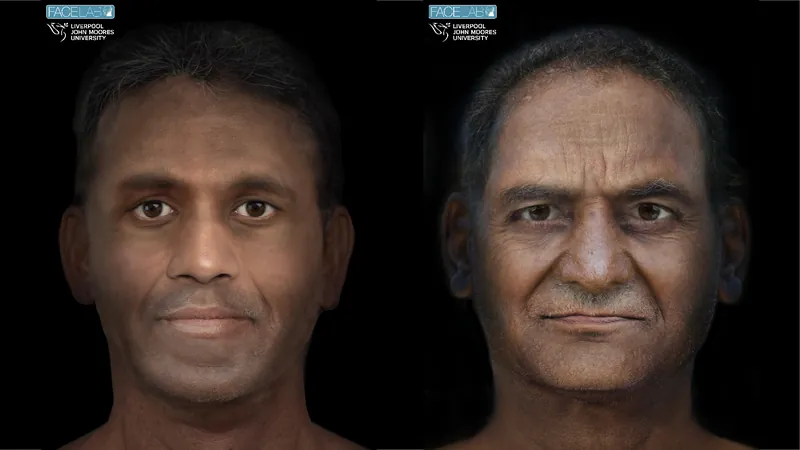
Eye-Opening Reconstructions Reveal Faces of Ancient Indian Civilization
2025-09-11
Author: Jia
Discovering the Origins of a Mysterious Civilization
Groundbreaking digital reconstructions have brought to life two men who roamed the earth approximately 2,500 years ago in what is now southern India. These striking facial models are crafted from the skulls unearthed at the Kondagai burial site in Tamil Nadu, revealing tantalizing details about their enigmatic civilization.
Kondagai is believed to be tied to the archaeological site of Keeladi, which dates back to around 580 B.C. Scholars suggest this locale was home to a thriving urban culture, complete with brick houses, advanced water management systems, and a trade network that extended far beyond its borders.
Unlocking Secrets Through Cutting-Edge Research
Since the Archaeological Survey of India first identified Keeladi in 2013, only a fraction of this remarkable urban settlement and its burial grounds have been excavated. Researchers, led by Kumaresan Ganesan from Madurai Kamaraj University, are now delving deeper using ancient DNA from the remains to uncover more about these mysterious inhabitants.
Breathing Life into History
The two skulls discovered in 2021 were found inside urns alongside valuable grave goods such as jewelry and pottery. An anatomical analysis revealed that the men were likely between 50 and 60 years old at the time of their deaths, though the exact causes remain a mystery.
To recreate their likeness, researchers performed CT scans to develop detailed 3D models. These were then refined at the U.K.'s Face Lab, known for its expertise in facial reconstruction. Caroline Wilkinson, the lab's director, emphasized that these models offer an extraordinary opportunity to connect with our ancestors.
The reconstructions considered various factors such as muscle and skin depth, modeled after contemporary South Asian demographics, though some artistic license was applied in choosing features like eye and hair color. Ganesan describes these efforts as preliminary, with plans to refine the models as more DNA data emerges.
Tracing Ancestral Links
As research progresses, scientists aim to map the ancestries of these ancient individuals. Initial genetic findings indicate that these men share similarities with modern South Asian populations, hinting at a possible ancestral connection to people living in southern India today. Nevertheless, Ganesan notes the need for more targeted DNA data to solidify these links.
As this exciting research unfolds, the portraits of these ancient men offer a glimpse into a past filled with sophistication and intrigue, connecting us to a lineage that may still resonate in today's South Asian communities.



 Brasil (PT)
Brasil (PT)
 Canada (EN)
Canada (EN)
 Chile (ES)
Chile (ES)
 Česko (CS)
Česko (CS)
 대한민국 (KO)
대한민국 (KO)
 España (ES)
España (ES)
 France (FR)
France (FR)
 Hong Kong (EN)
Hong Kong (EN)
 Italia (IT)
Italia (IT)
 日本 (JA)
日本 (JA)
 Magyarország (HU)
Magyarország (HU)
 Norge (NO)
Norge (NO)
 Polska (PL)
Polska (PL)
 Schweiz (DE)
Schweiz (DE)
 Singapore (EN)
Singapore (EN)
 Sverige (SV)
Sverige (SV)
 Suomi (FI)
Suomi (FI)
 Türkiye (TR)
Türkiye (TR)
 الإمارات العربية المتحدة (AR)
الإمارات العربية المتحدة (AR)